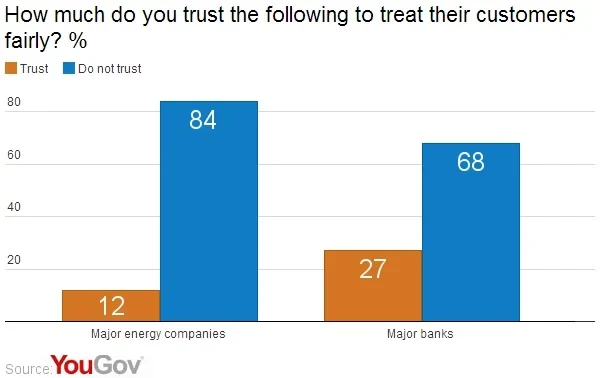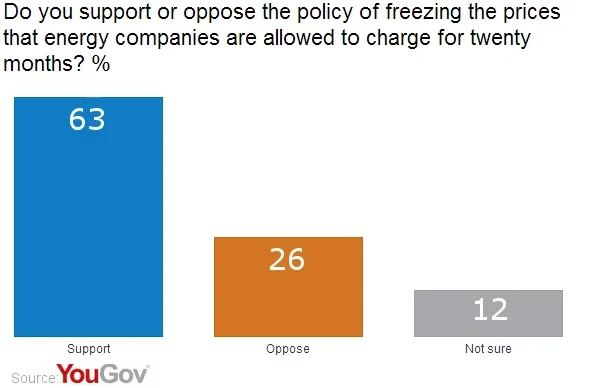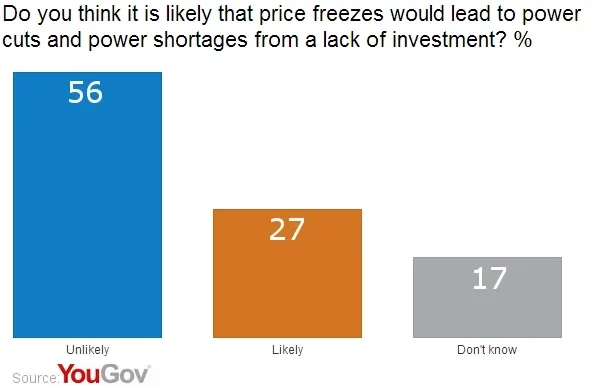From level-pegging to an 11-point lead in ten days: Labour has plainly had a good conference, in terms of public opinion. But how good – and can it last?
Here is the case for Labour optimism. After a difficult summer, YouGov’s poll for the Sunday Times puts Labour at its highest level, 42%, since June. 30% now say Ed Miliband is doing well as party leader – his best rating since May. When people are asked who would make the best Prime Minister, Miliband (25%) is now within three points of David Cameron (28%). That is the narrowest gap since Miliband became party leader three years ago.
Want to receive Peter Kellner's commentaries by email? Subscribe here
However, the history of conference bounces suggests caution. They are often dramatic but seldom last. The table below shows how this year compares with last year (the figures comes from our Sunday Times polls immediately before and immediately after the two conferences).
| 2012 | 2013 | |
|---|---|---|
% supporting Labour before conference | 40 | 37 |
% supporting Labour after conference | 45 | 42 |
Change | 5 | 5 |
% saying Miliband doing well beforehand | 28 | 22 |
% saying Miliband doing well afterwards | 40 | 30 |
Change | 12 | 8 |
In the weeks after last year’s conference, the figures for both Labour and its leader gradually subsided. Miliband’s ‘one nation’ speech kept his personal rating slightly above his pre-conference level for some time, but in due course it declined to new lows. It would be a signal achievement if this year turns out to be different, and the latest figures are sustained.
Can it be done? Much will depend on Miliband’s ability to defend his plan to freeze energy prices from his critics. Our Sunday Times poll, together with separate results from a poll for the Labour Party, suggest that most voters are currently on his side:
- Energy companies are even less popular than the banks. Just 12% trust them to treat their customers fairly; as many as 84% do not

- 63% support the plan to freeze gas and electricity prices for 20 months; only 26% oppose it.

- By two-to-one (56%-27%) voters do NOT believe that a 20-month price freeze would lead to power cuts or lack of investment in future power supplies.

- This policy puts pressure on Cameron to show voters whose side he is on. Asked whose interests the Prime Minister is more likely to defend, 47% say the energy companies, 20% say domestic consumers of gas and electricity, and 18% say neither.
So is the promised price freeze a sure-fire winner for Miliband? Not necessarily. For a policy to win votes, it is not enough for the idea itself to be popular; voters must also regard the person advancing it as being able to deliver it. They must believe in the storyteller as well as the story.
Voters’ initial reaction has been positive – hence the bounce in Labour’s support and Miliband’s rating. But one does not need a crystal ball to know that the Conservatives are likely to attack Miliband’s competence – to argue that his plan for a price freeze, though nice in theory, represents a lurch to the Left and shows that ‘Red Ed’ doesn’t understand how business works.
There are signs in the Sunday Times poll that the ‘Red Ed’ charge could stick. Even as we find Labour achieving a double-digit lead, we also find that the number of people who regard Miliband as ‘very’ or ‘fairly’ left-wing has climbed from 29% a year ago to 36% today, while the proportion regarding him as in or near the political centre has dropped from 39% to 34%.
These figures not be fatal: Cameron’s figures are an almost exact mirror-image of Miliband: 37% say the Prime Minister is very or fairly right-wing, while 34% put him at or near the political centre.
However, given that Miliband’s opponents are bound to paint him as a dangerous extremist, he faces a dilemma – whether to fight the ‘Red Ed’ tag and insist on his moderation, or to accept the tag and proclaim the virtues of radicalism. Recent history provides conflicting lessons. When he was Labour’s leader in the mid-1990s, Tony Blair ruthlessly removed any policy that could be tagged as left-wing, and placed his flag clearly on the centre ground. In contrast, Margaret Thatcher defied consensus thinking in the late 1970s and persuaded voters that the solutions to Britain’s problems required a radical shift of direction.
In effect, Miliband must choose whether to present himself as a left-wing version of Thatcher or a Blair-style moderate. He needs to persuade voters either that a modest dose of left-of-centre polices is needed, and that he knows how to make them work – or that to favour ‘productive’ over ‘predatory’ capitalism is not socialist at all, but a practical idea whose rightful home is firmly on the centre ground.
Whichever he picks, he must also show he has a quality that Blair and Thatcher shared when they fought for power from opposition: a public perception that they were up to the job. Miliband still has much to do, both to decide his story and to convince voters that he is the right storyteller.
Image: Getty
See the full YouGov / Sunday Times results
See the full YouGov / Labour Party results
Want to receive Peter Kellner's commentaries by email? Subscribe here







